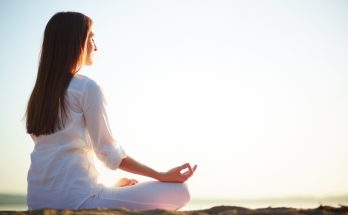In our fast-paced world, finding time to truly relax can feel like an impossible task. 🏃♀️💨 The constant buzz of notifications, never-ending to-do lists, and the pressure to be productive 24/7 can leave us feeling overwhelmed and stressed. But what if there were simple, effective techniques that could help you unwind and recharge during your precious leisure hours?
Imagine being able to switch off the noise of the world and tap into a deep sense of calm, anytime, anywhere. 🧘♀️✨ Whether you’re struggling with insomnia, battling anxiety, or simply looking to enhance your overall well-being, the right relaxation techniques can be game-changers. From mindfulness meditation to creative activities and even technology-assisted methods, there’s a world of relaxation waiting to be explored.
In this blog post, we’ll dive into seven powerful relaxation techniques that can transform your leisure time into a truly rejuvenating experience. Get ready to discover how mindfulness, muscle relaxation, yoga, nature, creativity, technology, and social connections can become your allies in the quest for relaxation. Let’s embark on this journey to a calmer, more balanced you!
Mindfulness Meditation Techniques
Breath awareness exercises
Breath awareness is a foundational mindfulness practice that can significantly reduce stress and promote relaxation. This simple yet powerful technique involves focusing your attention on your breath, observing its natural rhythm without trying to change it.
- Start by finding a comfortable seated position
- Close your eyes and take a few deep breaths
- Gradually shift to normal breathing
- Notice the sensations of breathing in your body
| Benefits of Breath Awareness |
|---|
| Reduces stress and anxiety |
| Improves focus and clarity |
| Enhances emotional regulation |
| Promotes better sleep |
Body scan meditation
Body scan meditation is an effective relaxation technique that involves systematically focusing on different parts of your body, from head to toe. This practice helps release tension and promotes a deep sense of relaxation.
- Lie down comfortably on your back
- Close your eyes and take a few deep breaths
- Start focusing on your toes, then move up through your body
- Notice any sensations or areas of tension
- Breathe into these areas, allowing them to relax
Guided imagery for relaxation
Guided imagery is a powerful relaxation technique that uses visualization to create a calm, peaceful mental state. This practice can transport you to a serene environment, helping to reduce stress and promote relaxation.
- Choose a quiet, comfortable space
- Close your eyes and take a few deep breaths
- Imagine a peaceful scene (e.g., beach, forest, mountain)
- Engage all your senses in the visualization
- Stay with the image for 5-10 minutes
Mindful walking practice
Mindful walking combines the benefits of physical activity with mindfulness, offering a unique way to relax and unwind. This practice involves paying close attention to the experience of walking, focusing on each step and your surroundings.
- Choose a quiet path or area
- Walk at a comfortable, natural pace
- Focus on the sensation of your feet touching the ground
- Notice the movement of your body as you walk
- Observe your surroundings without judgment
By incorporating these mindfulness meditation techniques into your leisure time, you can effectively reduce stress and promote relaxation. Each method offers a unique approach to mindfulness, allowing you to choose the technique that resonates most with you.
Progressive Muscle Relaxation
Understanding the technique
Progressive Muscle Relaxation (PMR) is a powerful relaxation technique that involves systematically tensing and relaxing different muscle groups in the body. This method helps individuals become more aware of physical sensations and effectively reduce tension.
Step-by-step muscle group relaxation
- Find a comfortable position
- Start with deep breathing
- Focus on each muscle group:
- Face
- Neck and shoulders
- Arms and hands
- Chest and abdomen
- Back
- Legs and feet
- Tense each muscle group for 5-10 seconds
- Release tension and relax for 15-20 seconds
- Move to the next muscle group
| Muscle Group | Tension Action | Relaxation Cue |
|---|---|---|
| Face | Scrunch up | Let go completely |
| Shoulders | Raise to ears | Drop and loosen |
| Hands | Make fists | Release and spread fingers |
| Legs | Point toes | Let feet fall naturally |
Benefits for stress reduction
PMR offers numerous benefits for stress reduction:
- Decreases overall body tension
- Lowers blood pressure and heart rate
- Improves sleep quality
- Enhances body awareness
- Reduces anxiety and muscle fatigue
Incorporating PMR into daily routine
To make PMR a habit:
- Practice at the same time each day
- Start with 10-15 minutes sessions
- Use guided audio recordings initially
- Gradually increase session duration
- Combine with other relaxation techniques for maximum benefit
Yoga for Relaxation
Gentle yoga poses for beginners
For those new to yoga, starting with gentle poses can be an excellent way to relax and unwind. Here are some beginner-friendly poses to try:
- Child’s Pose (Balasana)
- Cat-Cow Stretch (Marjaryasana-Bitilasana)
- Corpse Pose (Savasana)
- Mountain Pose (Tadasana)
- Standing Forward Bend (Uttanasana)
These poses help release tension and promote relaxation without requiring advanced flexibility or strength.
Restorative yoga sequences
Restorative yoga focuses on deep relaxation and stress relief. A typical sequence might include:
| Pose | Duration | Benefits |
|---|---|---|
| Supported Child’s Pose | 5-10 minutes | Calms the mind, relieves back tension |
| Legs-Up-the-Wall Pose | 10-15 minutes | Reduces swelling in legs, eases back pain |
| Reclined Bound Angle Pose | 10 minutes | Opens hips, promotes relaxation |
| Supported Fish Pose | 5-10 minutes | Opens chest, improves breathing |
Yoga breathing exercises (pranayama)
Pranayama, or yogic breathing, is a powerful relaxation technique. Try these exercises:
- Equal Breathing (Sama Vritti)
- Alternate Nostril Breathing (Nadi Shodhana)
- Belly Breathing (Diaphragmatic Breathing)
- Humming Bee Breath (Bhramari)
These exercises can help calm the nervous system and reduce stress.
Creating a calming yoga environment
To enhance your relaxation experience, consider the following:
- Choose a quiet space
- Use soft lighting or candles
- Play soothing music or nature sounds
- Use comfortable props like blankets and bolsters
- Incorporate calming scents with essential oils
A peaceful environment can significantly amplify the relaxation benefits of your yoga practice. With these yoga techniques and environmental considerations, you can create a powerful relaxation routine to unwind during your leisure hours.
Creative Relaxation Activities
Adult coloring books and art therapy
Adult coloring books have gained popularity as a creative relaxation technique. They offer a simple yet effective way to unwind and reduce stress. Here’s a comparison of adult coloring books and traditional art therapy:
| Feature | Adult Coloring Books | Traditional Art Therapy |
|---|---|---|
| Accessibility | Widely available, low cost | Requires a trained therapist |
| Structure | Pre-drawn designs | Open-ended creation |
| Focus | Concentration on coloring | Expression of emotions |
| Time commitment | Flexible, can be done anytime | Scheduled sessions |
Journaling for emotional release
Journaling is a powerful tool for emotional release and self-reflection. Consider these journaling techniques:
- Stream of consciousness writing
- Gratitude journaling
- Prompt-based journaling
- Art journaling
Music therapy and sound baths
Music therapy and sound baths offer unique ways to relax and rejuvenate. Some popular methods include:
- Listening to calming classical music
- Participating in guided sound meditation
- Attending live sound bath sessions
- Creating personal playlists for relaxation
Crafting and DIY projects
Engaging in crafting and DIY projects can be both relaxing and rewarding. Some ideas to try:
- Knitting or crocheting
- Scrapbooking
- Painting or drawing
- Woodworking or pottery
These creative activities not only help you unwind but also provide a sense of accomplishment. By focusing on a project, you can redirect your mind from daily stresses and enter a state of flow, promoting relaxation and mindfulness.
Social Relaxation Techniques
Group meditation classes
Group meditation classes offer a unique blend of social interaction and relaxation. These classes provide a supportive environment where participants can learn and practice meditation techniques together. Here’s why they’re effective:
- Shared energy: The collective focus enhances the meditative experience
- Guidance from an instructor: Learn proper techniques and receive immediate feedback
- Accountability: Regular classes help maintain a consistent practice
- Community support: Connect with like-minded individuals
Relaxing game nights with friends
Organizing game nights can be an excellent way to unwind and socialize. Choose games that promote relaxation rather than competition:
| Game Type | Examples | Benefits |
|---|---|---|
| Cooperative games | Pandemic, Forbidden Island | Foster teamwork, reduce stress |
| Creative games | Pictionary, Telestrations | Encourage laughter, stimulate imagination |
| Strategy games | Chess, Settlers of Catan | Engage the mind, promote focus |
Spa days and wellness retreats
Indulging in spa treatments or attending wellness retreats with friends can be incredibly rejuvenating. These experiences offer:
- Professional relaxation treatments
- Opportunity to disconnect from daily stressors
- Time for meaningful conversations and bonding
- Exposure to new relaxation techniques
Book clubs for literary escapism
Book clubs combine the relaxing activity of reading with social interaction. They provide:
- Mental stimulation through literary discussions
- Regular social gatherings centered around a shared interest
- Exposure to diverse perspectives and ideas
- A structured way to incorporate reading into your routine
By engaging in these social relaxation techniques, you can enhance your leisure time while strengthening connections with others. Next, we’ll explore how technology can assist in relaxation practices.
Incorporating relaxation techniques into your leisure time can significantly enhance your overall well-being and quality of life. From mindfulness meditation and progressive muscle relaxation to yoga and nature-based methods, there are numerous ways to unwind and recharge. Creative activities, technology-assisted relaxation, and social interactions also offer valuable opportunities to destress and find inner calm.
By exploring and adopting these various relaxation techniques, you can discover what works best for you and create a personalized toolkit for managing stress and promoting relaxation. Remember, the key to effective relaxation is consistency and practice. Make time for these activities regularly, and you’ll soon notice improvements in your stress levels, mental clarity, and overall sense of peace.




